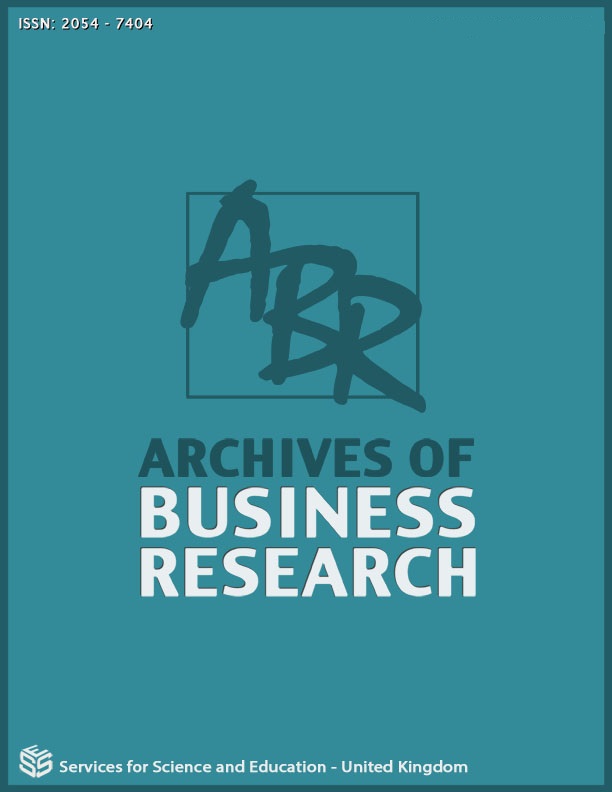Consumption, Extraction, Recharge and Availability of Water in the Main Subsectors of the Mexican Manufacturing Industry, Regional Levels
DOI:
https://doi.org/10.14738/abr.106.12511Keywords:
Industrial water consumption, water pressure, water availability industrial use, SDG indicatorsAbstract
If the consumptive use of water in agriculture, domestic, thermoelectric plants and service enterprices does not decrease, will the water be available for consumption in the manufacturing industries? There is no certainty of the availability of this resource in the medium or long term. Aquifer recharge depends on temperature-precipitation cycles and desalination processes, where appropriate. Using gray forecast models, linear and non-linear regression, the main sustainability indicators were calculated considering the subsectors that most demand water, to obtain a medium-term vision, applying scenarios to 2030 of status of resource at the national level, (administrative) water region and federative entity, as well as, by surface or underground source. Pollutant aspects or water quality were not considered. The results show the urgent decision-making to ensure the availability of water.
References
. Arreguín Cortés F. I., Uso eficiente del agua, Instituto Mexicano de Tecnología del Agua, CNA, Ingeniería Hidráulica en México, may-aug 1991: p. 9-22. México.
. Jiménez-Cisneros B., Torregrosa y Armentia M.L. & Aboites-Aguilar L. (2010), El agua en México: cauces y encauces, Academia Mexicana de Ciencias, CONAGUA; ISBN 978-607-95166-1-1. Pp. 179-184.
. Revollo-Fernández D.A., Rodríguez-Tapia L. & Jorge A. Morales-Novelo J.A. (2018), Valor económico del agua de la industria manufacturera ubicada en la Subregión Hidrológica Río San Juan, México, Tecnología y ciencias del agua, 9(5), 218-245, DOI:10.24850/j-tyca-2018-05-09.
. DOF (2015), ACUERDO por el que se da a conocer el resultado de los estudios técnicos de aguas nacionales subterráneas del Acuífero China-General Bravo, clave 1913, en el Estado de Nuevo León, Región Hidrológico-Administrativa Río Bravo, Acuerdo publicado en el Diario Oficial de la Federación el 30 de junio de 2015 (Agreement published in the Official Gazette of the Federation on June 30, 2015), (accessed March 23, 2022): DOF - Diario Oficial de la Federación
. Ríos Flores, J. L., Torres Moreno, M., Ruiz Torres, J., & Torres Moreno, M. A. (2016). Efficiency and productivity of water irrigation in wheat (Triticum vulgare) from Ensenada and Valle de Mexicali, Baja California, Mexico. Acta Universitaria, 26(1), 20-29. doi: 10.15174/au.2016.825.
. FAO (2018), Progress on Water-use Efficiency Global baseline for SDG indicator 6.4.1, Rome. FAO/UN-Water. 56 pp. 6-38. Licence: CC BY-NC-SA 3.0 IGO. ISBN 978-92-5-130988-9, (accessed June 4, 2022): Progress on change in water-use efficiency (fao.org)
. Ledesma-Carrión D.E., Pérez-Hernández A.A. & Hernández-Hernández L., Effect of Geo-Climatic Variables on the Yield of the Main Spring-Summer Seasonal Crops of the State of Aguascalientes, Realidad, Revista Internacional de Estadística y Geografía, Vol. 12, Núm. 3, año 2021: p. 62-65. ISBN: ISSN 2007-2961.
. CONAGUA, Estadísticas del agua en México, SINA. Statistical Yearbooks from 2003 to 2019: p. 3-262, (accessed February 22, 2022): http://sina.conagua.gob.mx/sina/index.php?publicaciones=1.
. CNA, Compendio Básico del Agua en México, Gerencia de Planeación Hidráulica. SINA. Años 1999, 2001 and 2002. Mexico, (accessed May 2, 2022). http://sina.conagua.gob.mx/sina/index.php?publicaciones=1.
. CONAGUA (2013), Atlas del Agua en México 2013, Comisión Nacional del Agua Secretaría de Medio Ambiente y Recursos Naturales. México, (accessed October 5, 2021). http://www.conagua.gob.mx/SINA
. INEGI (1993), Aguascalientes. Estudio Hidrológico, Instituto Nacional de Estadística y Geografía, ISBN 968-892-408-3.
. SEMARNAT, Atlas Digital Geográfico, Secretaría del Medio Ambiente y Recursos Naturales, Mexico, (accessed June 3, 2022): https://gisviewer.semarnat.gob.mx/aplicaciones/Atlas2015/atm_climas.html.
. Salazar-Adams A & Parra-Armenta E.M., Las asociaciones público-privadas: Aguascalientes y Saltillo, El agua en las ciudades del norte y Bajío de México. Capacidad institucional y desempeño. Ed. El Colegio de Sonora, pp. 94-108. México. ISBN: 978-607-8576-77-7.
. RETC, Registro de emisiones y transferencia de contaminantes, SEMARNAT data, (accessed May 30, 2022) https://apps1.semarnat.gob.mx:8443/retc/retc/consulta.php?enfe=01&muni=01001§=13&acti=QD&anio=2019&ncas=S/C2&tipb=1.
. Rossi A., Biancalani R. & Chocholata L., Change in water-use efficiency over time (SDG indicator 6.4.1). Analysis and interpretation of preliminary results in key regions and countries, Food and Agriculture Organization of the United Nations, pp. 1-32. USA. ISBN 978-92-5-131723-5.
. Wojdalski J., Dróżdż B., Piechocki J., Gaworski M., Zander Z. & Marjanowski J., Determinants of water consumption in the dairy industry, Polish Journal of Chemical Technology, 15, 2, pp. 61-72, Polonia. 10.2478/pjct-2013-0025.
. World Bank, Data, World Bank, DataBank, (accessed June 20, 2021) : https://datos.bancomundial.org/indicator/NV.IND.TOTL.ZS.
. Fang He, Tao Tao & Min Li, Application of New Information and Equal Dimensional Grey Model in Industrial Water Consumption, Sensors & Transducers, Vol. 21, Special Issue, May, pp. 15-19, USA. https://www.sensorsportal.com/HTML/DIGEST/P_SI_334.htm.
. Koval V.V., Kondratiev A. Yu., Bobrov V.V., Shmatkov V.N. & Rublevskaya N.I., Características del consumo de agua por la población de una ciudad industrial, Medicina Preventiva 15/Vol. XX/1, pp. 128-132. Ucrania. UDC 628.1.033:711.454.
. Chapra S. C. & Canale R. P. (2015), Métodos numéricos para ingenieros, McGraw Hill, 7ª. Ed., pp. 117-121, 566-574. ISBN: 978-607-15-1294-9. Mexico.
. Mahmut F., Mustafa E. T., Comparative analysis of neural network techniques for predicting water consumption time series, Journal of Hydrology, Vol. 38, 4, 2010, pp. 46–51. México.
. CONAPO, Data. Consejo Nacional de Población, (accessed May 3, 2021). Datos Abiertos de México - Proyecciones de la Población de México y de las Entidades Federativas, 2016-2050
. BANXICO, Sistema de Información Económica, BANXICO, (accessed May 16, 2021): SIE - Mercado cambiario (banxico.org.mx).
. Sartor M., Kaschek M. & Chmiel H., Reducing water consumption in industry through flow analysis and simulation: a case study from India, Int. J. Environmental Technology and Management, Inderscience Enterprises Ltd., Vol. 10, Nos. 3/4, pp.274–285.
. Koval V.V., Kondratiev A. Yu., Bobrov V.V., Shmatkov V.N. & Rublevskaya N.I. (2014), Características del consumo de agua por la población de una ciudad industrial, Medicina Preventiva 15/Vol. XX/1, pp. 128-132. Ucrania. UDC 628.1.033:711.454.
. Ledesma-Carrión, D. E., Pérez-Hernández A. A. y Hernández-Hernández L. (2020), Status of the emission and transfer of pollutants in a medium‑sized region, SN Applied Sciences. 2(4):710, April. Pp. 1-20. DOI:10.1007/s42452-020-2437-5.
Downloads
Published
How to Cite
Issue
Section
License
Copyright (c) 2022 Dora Ledesma

This work is licensed under a Creative Commons Attribution 4.0 International License.






